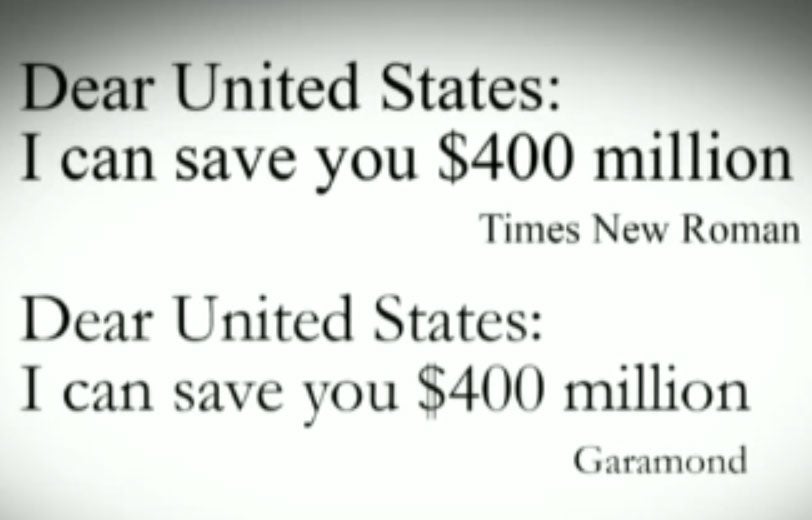'Save $400m by switching fonts': Unfortunately it won't work for the US government - or for you
Proposal by teenager caught the media's imagination, but unfortunately the calculations just don't add up

Your support helps us to tell the story
From reproductive rights to climate change to Big Tech, The Independent is on the ground when the story is developing. Whether it's investigating the financials of Elon Musk's pro-Trump PAC or producing our latest documentary, 'The A Word', which shines a light on the American women fighting for reproductive rights, we know how important it is to parse out the facts from the messaging.
At such a critical moment in US history, we need reporters on the ground. Your donation allows us to keep sending journalists to speak to both sides of the story.
The Independent is trusted by Americans across the entire political spectrum. And unlike many other quality news outlets, we choose not to lock Americans out of our reporting and analysis with paywalls. We believe quality journalism should be available to everyone, paid for by those who can afford it.
Your support makes all the difference.When a 14-year-old student Suvir Mirchandani suggested that he could save the US government as much as much as $400 million dollars (£240m) by simply changing the font in official documents it seemed like the perfect lifehack: simple, elegant, and one in the eye for wasteful bureaucracies the world over.
Mirchandani’s hypothesis, published in a student-run Harvard journal, was that by switching from Times New Roman to a narrower, smaller font (He chose Garamond) the government would be using less of their precious printer ink - a liquid more expensive then Chanel No.5 perfume.
The difference in volume on a word-by-word basis might be miniscule, but when you consider the economies of scale involved (tens of thousands of printers printing tens of thousands of documents every month, year after year) then even a small saving on each page would have massive benefits.
However - and we say this without meaning to criticise a bright and well-intentioned teen whose student paper became the media’s underdog story of the day – it seems that the great font-swap hypothesis is not quite so straightforward.
For a start, the estimates of money saved by the project are a little generous, with Mirchandani’s projection of $136m in federal saving and $234m in state saving based on the estimated cost of ink as “25.86 per cent of the total cost of ownership of a printer”.

However, as The Atlantic has pointed out, this figure doesn’t tally with the government’s own reports. In 2013 the US Government Printing Office (the GPO) spent just $750,000 on printer ink, despite the fact that they’re project to account for a third ($680m) of the total print budget in 2014 ($1.8 billion).
These discrepancies are no doubt because although printer ink is certainly extortionately priced, this is mainly the case for consumers, buying cartridge by cartridge – not for governments who will have wholesale bulk contracts. There is a little wiggle room in each of these figures it’s true, but not enough to scale from low single-figure savings (in millions) up into the hundreds.
In addition, although Garamond (Mirchandani’s font of choice) is certainly a slimmer font than Times New Roman, it’s also just physically smaller, with typography expert Thomas Phinney pointing out that you’d have to use the font in a larger size to keep the legibility the same, negating the saving arising from the font’s smaller ‘x size’ (the height of lowercase letters).
So unfortunately it seems that switching fonts isn't the quick-fix that Mirchandani (and the media) have promised, but this doesn't mean that savings can't be made. The Atlantic notes that the best way to cut down on government printing budgets (and a change that is already being made) is by simply dropping the ink altogether by distributing more documents online.
Join our commenting forum
Join thought-provoking conversations, follow other Independent readers and see their replies
Comments